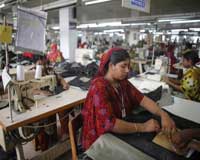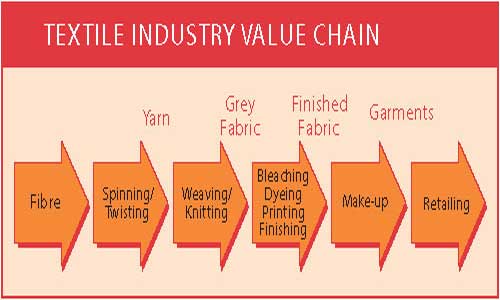"If stakeholders in Bangladesh’s RMG industry are looking to uphold rigorous growth in domestic and international arena, they must emphasise on upgrading the textile value chain and other industries to ensure more value addition. Focussing on establishing semi-heavy industries could be one way. Heavy industrialisation will make sure of building a sector which is more strong and sustainable. The country has set a target of exporting $ 50 billion of RMG by 2021. But to push this growth, Bangladesh industries need to carefully look at how it scores on sustainability spectrum."

If stakeholders in Bangladesh’s RMG industry are looking to uphold rigorous growth in domestic and international arena, they must emphasise on upgrading the textile value chain and other industries to ensure more value addition. Focussing on establishing semi-heavy industries could be one way. Heavy industrialisation will make sure of building a sector which is more strong and sustainable. The country has set a target of exporting $ 50 billion of RMG by 2021. But to push this growth, Bangladesh industries need to carefully look at how it scores on sustainability spectrum.
Value chain upgradation strategy

The central bank’s periodical analysis of RMG sector has shown local value retention of the industry was 73.12 per cent in fiscal year 2008-09, it is 82 per cent in FY16. President of FBCCI and former president of the Bangladesh Garment Manufacturers and Exporters Association (BGMEA) Md Shafiul Islam Mohiuddin, has urged the big RMG entrepreneurs to bring diversity and make high-end products to bring out more value addition. For that the country needs to focus on semi heavy industry like sewing machine industry, knitting machine, dyeing machine, needle industry, etc. If Bangladesh wants to attain its exports target of $50 billion and succeeded in vision 2041, the country must spend more on research and development.
Machinery import status
Bangladesh Textile Mills Association (BTMA) president Tapan Chowdhury says Bangladesh textile millers imported machinery worth TK 71.19 billion in the last fiscal year 2014-15, and 2013-14, it was TK 50.63 billion because many millers went for business expansion and development of productivity. As per the association, more than 1,300 spinning, weaving, dyeing, printing and finishing mills operate in the country and the sector’s contribution to GDP is 13 per cent. Bangladesh has a strong position in backward-linkage industry.
SEZs to offer a lease of life
The cost of doing business in Bangladesh is considered to be one of the lowest when compared to the other major country. A study by Japan External Trade Organization (JETRO) shows that the cost of doing business in Bangladesh is lowest among 28 south Asian countries. At Anwara in Chittagong, Bangladesh government is set to approve a project for building infrastructure for the proposed Chinese Economic and Industrial Zone (CEIZ). The CEIZ will be developed under the Chinese government soft loan of US $ 280.71 million. The Seventh Five Year Plan and achieving the Vision 2021 of the government of Bangladesh, The Bangladesh Export Zones Authority (BEZA) has set a target to build 100 economic zones under public-private arrangement by 2030. The SEZs will be developed on 75,000 acres of land that will create 10 million jobs for the people. The SEZs will have the capacity to produce products and services worth $ 40 billion, according to BEZA sources.
A holistic industrial development
Bangladesh imports spinning, knitting, weaving, dyeing and other machineries from Belgium, Brazil, China, Czech Republic, Hong Kong, Indonesia, Ireland, Italy, Japan etc. If Bangladesh can build its infrastructure of machinery and chemical industry, the country will be able to sell those not only to domestic textile and clothing units and other industries; they also will be able to export them to other countries. And this capacity will help to diversify its portfolio. This upgradation will not only make sure sustainable development of textile & clothing sector, it would also open opportunities for other allied industries.












